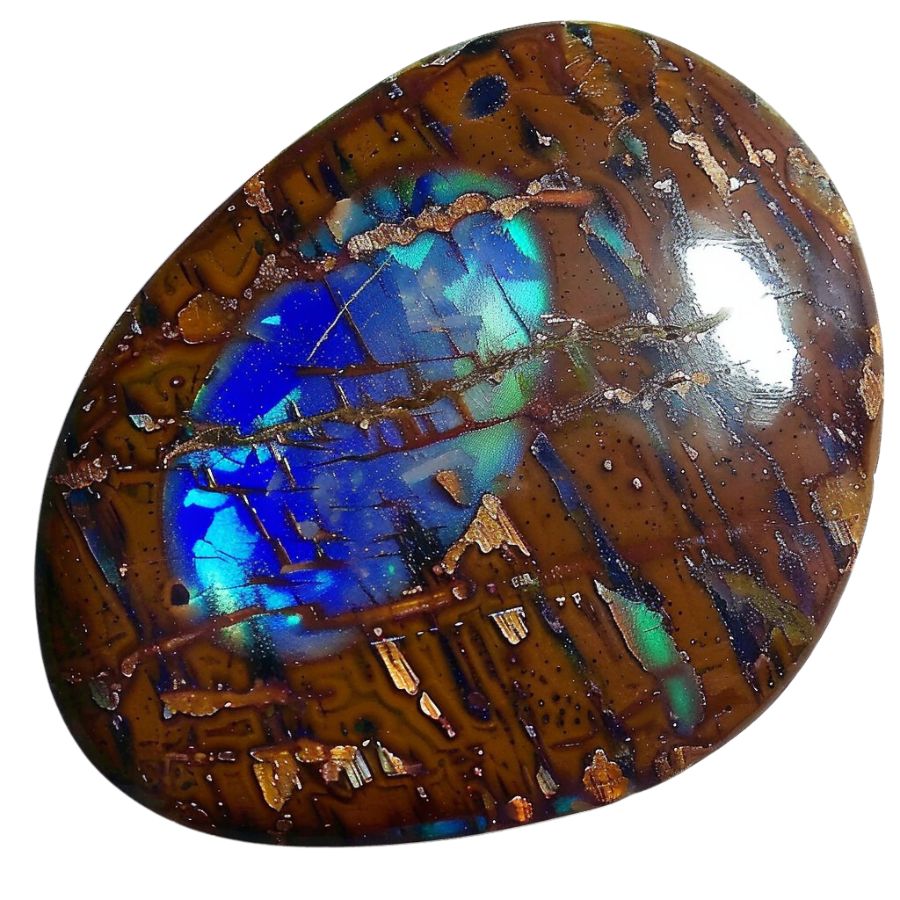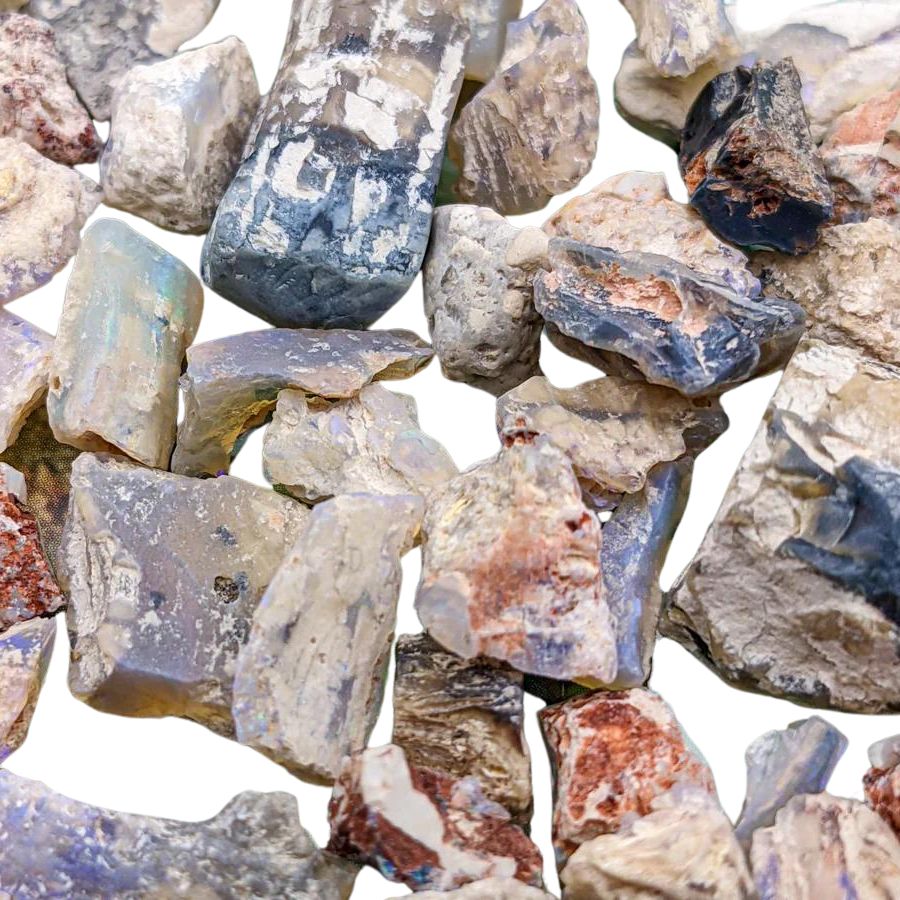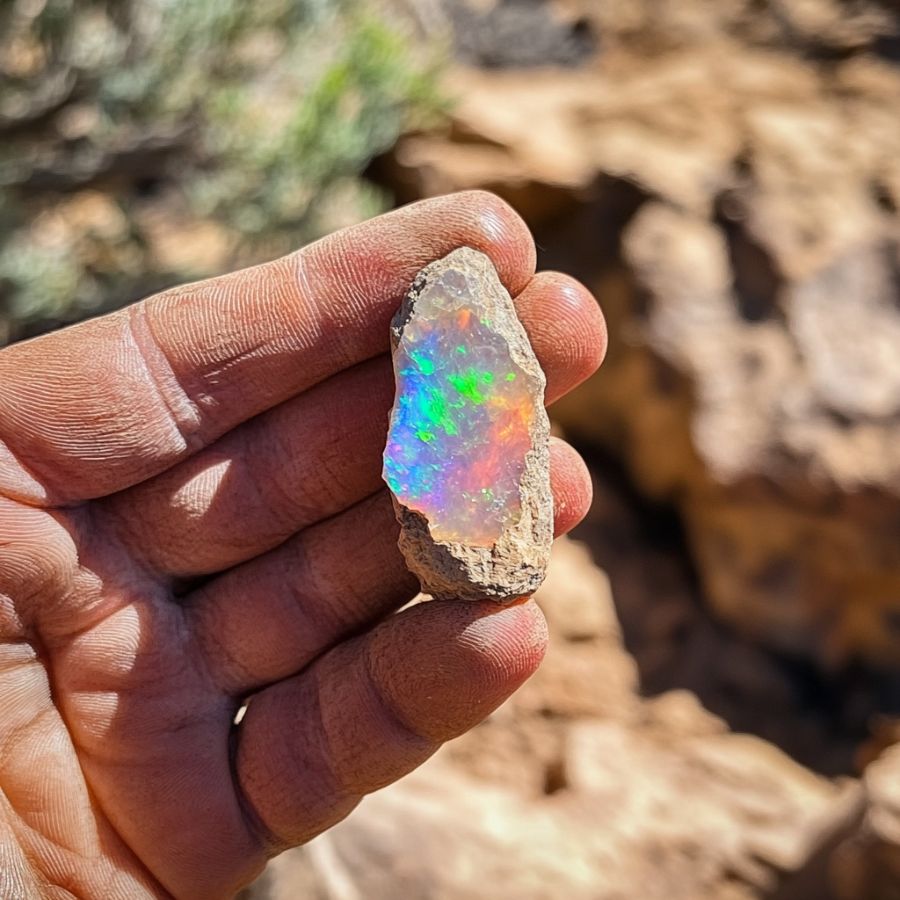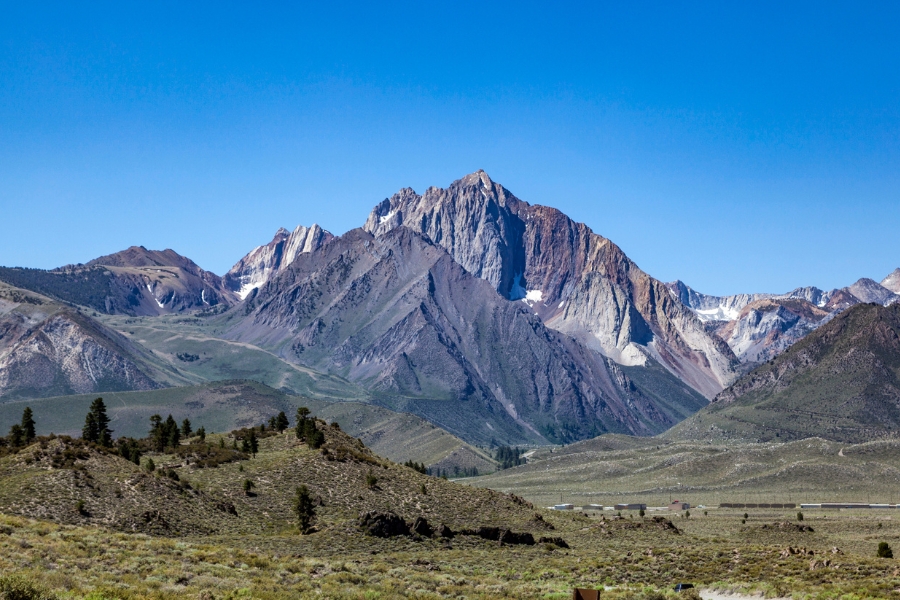Hunting for opals is an exciting adventure that combines the beauty of nature with the thrill of finding precious stones. In a state famous for its diverse landscapes, people can enjoy the quest to uncover these colorful gems.
Our state, with its special geological features, offers a great place for opal hunters. We’ll explore the best spots to find opals, the tools you need, and helpful tips for a successful hunt.
Whether you’re experienced or just starting, this guide will help you find opals in this gem-rich area.
How Opal Forms Here
Opal forms here through a fascinating natural process. When water containing silica seeps into cracks and voids in rocks, it begins to evaporate, leaving behind tiny silica spheres.
Over time, these spheres stack in a grid-like pattern, creating opal. This process can take millions of years!
The colors in opal come from the way light refracts through the silica spheres. Different conditions in the ground, like the type of rock and the presence of other minerals, can affect the opal’s type, color, and quality.
The Types Of Opal
There are several incredible types of Opal that can be found. Each is uniquely beautiful and interesting including:

Common Opal
Common opal, also known as “potch,” stands out from other types of opal due to its lack of play-of-color, the iridescent display seen in precious opal. Instead, common opal features consistent, solid colors like white, pink, yellow, green, and blue.
It typically has a waxy to pearly luster and ranges from opaque to translucent. To identify common opal, look for its uniform color and absence of the shimmering color flashes found in precious opal.
Common opal forms under similar geological conditions as other opals, where silica-rich water seeps into rock cavities and slowly hardens over time. This process usually occurs in areas with volcanic activity or hot springs, where silica deposits are prevalent.

Fire Opal
Fire opal is known for its warm, vibrant colors, ranging from yellow and orange to deep red. Unlike precious opal, fire opal may or may not display the play-of-color, but its fiery body color makes it unique.
To identify fire opal, look for its bright, translucent to transparent appearance and the absence or presence of play-of-color within the warm hues.
Fire opal forms in volcanic regions where water rich in silica interacts with hot lava, filling cavities and fractures within the rock. Over time, the silica solution hardens, creating opal.
Visually, fire opal’s appeal lies in its vivid, flame-like colors that can be either uniform or exhibit internal flashes of color.

Boulder Opal
Boulder opal forms within the ironstone boulders of its host rock. Unlike other opals, boulder opal features precious opal veins intertwined with the natural rock, creating a beautiful contrast.
This opal is distinguished by its combination of colorful opal patches and the surrounding matrix, which can include ironstone or sandstone. To identify boulder opal, look for its vibrant play-of-color within the darker host rock, often showcasing brilliant blues, greens, and reds.
Boulder opal forms in sedimentary environments where silica-rich water infiltrates cracks and voids within ironstone or sandstone boulders. Over time, the silica hardens into opal, often creating thin seams or patches within the rock.

Hyalite Opal
Hyalite opal, also known as water opal, is a transparent to translucent type of opal that is distinctive for its glass-like appearance and lack of play-of-color. Unlike precious opal, which displays a rainbow-like iridescence.
You can identify hyalite opal by its clear to milky appearance, often with a slight green or blue fluorescence under UV light.
Hyalite opal forms in low-temperature hydrothermal environments, typically in volcanic regions. It precipitates from silica-rich fluids that fill cracks and voids in the host rock. This process can occur relatively quickly compared to other opal types.
Visually, hyalite opal resembles droplets of water or glass, often appearing as smooth, botryoidal (grape-like) formations. Its transparent nature makes it unique among opals, and its slight fluorescence adds to its allure.

Black Opal
Black opal is a rare and highly prized variety known for its dark body tone, which enhances the vibrant play-of-color. Unlike other opals, black opal has a deep background color, ranging from dark gray to jet black, making the iridescent colors more striking.
To identify black opal, look for its intense, dark base color coupled with brilliant flashes of blues, greens, reds, and other hues.
The presence of iron and carbon contributes to its dark body color. In the United States, black opal is primarily found in the Virgin Valley of Nevada, known for its rich opal deposits.

Crystal Opal
Crystal opal is known for its transparent to translucent body, which allows the play-of-color to shine through brilliantly. Unlike common opal, which is opaque, crystal opal’s clear or semi-clear nature enhances its vibrant internal colors.
To identify crystal opal, look for its see-through quality combined with flashes of color that can include blues, greens, reds, and more.
Its unique transparency sets crystal opal apart, making it a favorite among gem enthusiasts and collectors for its ethereal beauty.

Wood Opal (Opalized Wood)
Opalized wood is a fascinating form of petrified wood where the organic material has been replaced by opal. Unlike other opals, opalized wood retains the original structure and texture of the wood, creating a unique blend of organic and mineral elements.
To identify opalized wood, look for its wood grain patterns and opalescent sheen, often displaying a range of colors from white and brown to vibrant reds and greens.
Opalized wood forms under specific conditions where wood is buried in silica-rich sediment. Over millions of years, the silica solution gradually replaces the organic wood material with opal, preserving the wood’s original structure in stunning detail.

Contra Luz Opal
Contra Luz opal reveals its vibrant play-of-color when illuminated from behind. Unlike other opals, which display their colors through surface reflection, contra luz opal’s brilliance comes to life with transmitted light.
To identify contra luz opal, hold the gem against a light source and observe the internal flashes of color, which can include vivid reds, blues, greens, and purples.
This opal forms in volcanic environments where silica-rich water infiltrates cracks and cavities in the host rock. As the water evaporates, it leaves behind silica deposits that eventually solidify into opal.
Visually, contra luz opal appears nearly clear or milky when viewed without backlighting. However, when backlit, it displays stunning, colorful patterns that seem to glow from within.
What Rough Opal Looks Like
When you’re out looking for rough opal on your own it’s important to know what you’re looking for.
DON'T MISS OUT ON ANY GREAT FINDS!
While you're out searching for Geodes you're going to find a lot of other interesting rocks and minerals along the way. The last thing you want to do is toss out something really interesting or valuable. It can be easy to misidentify things without a little guidance.
We've put together a fantastic field guide that makes identifying 140 of the most interesting and valuable rocks and minerals you will find REALLY EASY. It's simple to use, really durable, and will allow you to identify just about any rock and mineral you come across. Make sure you bring it along on your hunt!
This is what you need to look out for:
Look for exteriors like this

Look for play-of-color

Opal can display a range of colors, but what sets precious opal apart is its play-of-color—vivid flashes of multiple colors that change with the angle of light. Even in rough form, you might see hints of these colors peeking through.
Common opal lacks this feature and typically appears as a solid color like white, blue, or pink.
Check for a glassy or waxy luster

Opal often has a distinctive glassy or waxy luster. When you find a potential opal, examine its surface.
It should look shiny and smooth, almost like glass, even if it is still encased in a matrix or rough exterior.
Assess the density and weight

Opal is generally lighter than rocks of a similar size. When you pick up a piece of rough opal, it should feel lighter than expected.
Additionally, opal is relatively soft, with a Mohs hardness of 5.5 to 6.5, so it can be scratched more easily than quartz or other harder minerals.
A Quick Request About Collecting
Always Confirm Access and Collection Rules!
Before heading out to any of the locations on our list you need to confirm access requirements and collection rules for both public and private locations directly with the location. We haven’t personally verified every location and the access requirements and collection rules often change without notice.
Many of the locations we mention will not allow collecting but are still great places for those who love to find beautiful rocks and minerals in the wild without keeping them. We also can’t guarantee you will find anything in these locations since they are constantly changing.
Always get updated information directly from the source ahead of time to ensure responsible rockhounding. If you want even more current options it’s always a good idea to contact local rock and mineral clubs and groups
Tips on where to look
Once you get to the places we have listed below there are some things you should keep in mind when you’re searching:
Search in Sedimentary Rock Formations

Opal can also form in sedimentary rock formations where silica deposits have accumulated over time.
Focus on areas with ancient lake beds or clay deposits, as these environments are conducive to opal formation.
Check Dry Creek Beds and Gullies

Dry creek beds and gullies can be excellent places to find opal, as water flow can erode and expose opal-bearing rocks.
Look for exposed rock and gravel in these areas, especially after rainfall or seasonal flooding.
Investigate Old Mining Sites

Abandoned or historical mining sites can be rich in opal and other minerals. These areas often have tailings and discarded rock that may still contain opal.
Always seek permission if the land is privately owned and follow safety guidelines.
Look for Indicator Minerals

Certain minerals can indicate the presence of opal. Look for rocks and soil containing ironstone, sandstone, or clay, as these materials often coexist with opal deposits.
Additionally, finding quartz or chalcedony can suggest nearby opal.
The types of Opal can you find around the state
California boasts a diverse array of opals, including precious opal, fire opal, and common opal. Varieties like hyalite, moss opal, and lemon opal are also present, each with its unique characteristics and charm.
Some Great Places To Start
Here are some of the better places in the state to start looking:
Benton Range

Rock hunters who want to find opals will love the Benton Range. This area, tucked away in the eastern part of the state near the border with Nevada, is not your typical desert.
The unique rocks that you can find there make it stand out. Over millions of years, volcanoes exploded and left behind ash that hardened into tuff, a soft rock. This tuff is great for making opals because it has many tiny holes that water rich in silica can fill and turn into these sparkling rocks.
You can find “common opal” in the Benton Range. This type of opal may not have the famous “opal flash,” but it can have beautiful colors.
You might also have a better chance of finding something because it’s not as busy as other places where people go to look for opals. Plus, as you look for opals, you’ll be able to enjoy beautiful views of mountains and the sky.
The hunt for these gems will be as fun as the gifts you might find and bring home!
Read the most up-to-date rules on collecting before you bring anything back from California.
Where we found opal at Benton Range
When you search for opals in the Benton Range, you may come across pieces just sitting there. The opals can come to the surface because the ground is cracked and can bring them up to the surface.
Chocolate Mountains

For finding opals, California’s Chocolate Mountains are like a secret store. This range includes the state’s southeast and is famous for its rough, rocky scenery.
It’s fantastic that these mountains are made of different rocks blasted together over time. People looking for wealth will be thrilled to find that there is a chance of finding opals in this mix of rocks.
Because this spot isn’t as well known for opal finding as others, it isn’t as crowded. This could make it easier for you to find your specimen.
Furthermore, the trip doesn’t end with opals; the Chocolate Mountains are also full of interesting plants and animals that were around during the Gold Rush. If you like a challenge and getting out into nature, this could be your next big opal experience.
Where we found opal at the Chocolate Mountain
You can find opals around the vicinity of Chocolate Mountains.
Opal Mountain

The Opal Mountains are hidden in the Mojave Desert. They are a great place to look for opals because not many people know about them.
This part of the desert isn’t like any other—it’s like a big puzzle made of volcanic rock pieces that could hide riches. A very long time ago, lava turned into rhyolite, which is a type of rock that looks like fire.
The water with silica in it dissolves and then seeps into the cracks in this rhyolite, which is where opals can form. This silica changed into the beautiful opals we see today over time.
You can find common opals here. They have a pretty, waxy glow, but they don’t play with color like some other opals do. Some people like to mine there, but not as many people do.
As you walk through the Opal Mountains, the Mojave Desert’s peaceful beauty makes the search for these gems an adventure in and of itself.
Where we found opal at Opal Mountain
You can explore the rocky terrain of the mountain to try your luck at finding opals here.
Red Rock Canyon

It’s not just the tall, rusty red cliffs and interesting rock shapes that make Red Rock Canyon State Park in California cool. Rock hunters are also very excited about this place because it’s where they can find opals.
This park is where the southernmost tip of the Sierra Nevada Mountains meets the El Paso Range. It has a past that includes rivers and volcanoes from long ago. The rocks that can hold opals were formed by volcanoes and rivers.
This makes the area interesting for people who like opals. The opals in Red Rock Canyon aren’t the flashy kind you might think of when you hear the word “opal.”
Instead, they’re the common type, which means they have a nice glow but not the rainbow colors you might imagine. It’s still fun to find them, though.
The park was once under the ocean, and the opals were formed when water filled in cracks in the rock with silica-rich water. Everyone is welcome to hike and explore Red Rock Canyon.
You can find these secret gems and enjoy some pretty amazing views while you’re there. Just make sure you know the rules about rock collecting before you go looking!
Where we found opal at Red Rock Canyon
The park’s rich geology does include layers of sedimentary rock, where you can find differrent opal specimens.
Russian River

The Russian River is famous for the way its waters cut through beautiful scenery, making it a great place for people who love being outside. You can swim or paddleboard there, but it’s also a cool place for rock lovers.
Rivers like the Russian help bring stones and minerals from deep in the ground to the surface and move them around. Opals are sometimes one of these stones and minerals.
It’s not the same kind of opal that you see in jewelry stores; these are called “common opals.” Opals are very valuable, so these stones may not have the bright flashes of color that precious ones do. However, they can still look pretty cool with their soft glow.
It’s important to know the rules if you want to find an opal along the Russian River. This means finding out what the rules are in your area about gathering stones. You might be able to look anywhere, but in some places you might be limited to protect the environment.
Where we found opal at the Russian River
Because the water can carry these stones a long way, you might find them by the river or in the gravel beds. These secret gems are brought to the surface by a natural belt.
Always Confirm Access and Collection Rules!
Before heading out to any of the locations on our list you need to confirm access requirements and collection rules for both public and private locations directly with the location. We haven’t personally verified every location and the access requirements and collection rules often change without notice.
Many of the locations we mention will not allow collecting but are still great places for those who love to find beautiful rocks and minerals in the wild without keeping them. We also can’t guarantee you will find anything in these locations since they are constantly changing.
Always get updated information directly from the source ahead of time to ensure responsible rockhounding. If you want even more current options it’s always a good idea to contact local rock and mineral clubs and groups
Places Opal has been found by county
| County | Location |
| Calaveras | Valley Springs area, Hogan Reservoir |
| Calaveras | Valley Springs area, Hooten Ranch |
| Calaveras | Valley Springs area, Snyder Ranch |
| Calaveras | Molekumne Hill |
| Calaveras | Green Mountain Mine |
| Calaveras | Rough Diamond Mine |
| Calaveras | Chili Gulch |
| Fresno | Big Creek |
| Fresno | Rush Creek |
| Glenn | Black Diamond Mine |
| Inyo | Fish Springs area, San Carlos Mine |
| Inyo | Tecopa area, Noonday Mine |
| Kern | Rand Mountains |
| Kern | Mojave area, El Paso Mountains |
| Kern | Last Chance Canyon |
| Lake | Lakeport area, Clear Lake |
| Lassen | Long Valley Quarries |
| Los Angeles | Antelope Valley |
| Los Angeles | Agoura Hills |
| Los Angeles | Kagel Canyon |
| Los Angeles | Tick Canyon |
| Los Angeles | Palos Verdes Beach Cliffs |
| Los Angeles | Rolling Hills |
| Mono | Banner Ridge |
| Mono | Bodie Hills |
| Monterey | Santa Lucia Mountains |
| Plumas | Clio area, Laura Quartz Mine |
| Riverside | Mule Mountains |
| San Bernardino | Cady Mountains |
| San Bernardino | Bristol Mountains |
| San Bernardino | Bristol Mountains |
| San Bernardino | Afton Canyon |
| San Bernardino | Black Mountains |
| San Bernardino | Lead Pipe Springs |
| San Bernardino | Black Canyon |
| San Bernardino | Saddleback Mountain |
| San Diego | Tourmaline Queen Mountain |
| San Luis Obispo | Shell Beach |
| Shasta | Burney Spring Mountain |
| Shasta | Chalk Mountain |
| Shasta | Haney Mountain |
| Shasta | Klamath Mountain |
| Shasta | Lassen Volcanic National Park |
| Siskiyou | Copco Lake |
| Siskiyou | Catacombs Cave |
| Sonoma | Mount Pisgah Vineyard |
| Sonoma | Sonoma Mountains |
| Tulare | Deer Creek |


